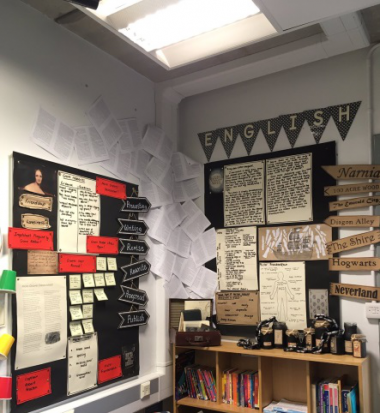4 Hooks to Perfectly Pitch Texts to Reluctant Readers and Writers

Getting children invested in a text is one thing, keeping them invested is another. Here's how you can keep them wanting to come back to books every time.

Children who read extensively tend to be better writers – why? Simply because they have the travelled to faraway lands and met wonderful, varied characters in an array of books. They have seen how to structure writing and been exposed to a range of vocabulary.
But as with any class, there are also those children who are reluctant readers/writers. It is our job to get them writing, and doing so to a specified standard, regardless of any kicking or screaming in protest that might ensue.
So what’s the answer? How do we minimise the tantrums and engage our children in a love of literature. The answer is easy: pitch it right!
Know your children. Know what will hook them in. Know what will capture their imaginations. Know what will ignite endless discussion.
How have I done this? Well, here are my tips for getting true engagement in English.
1 | Choose a quality text or film
There is a wealth of amazing literature out there to use with children. You want a text that the children can get their teeth into. These can be short texts, longer more challenging novels or picture books.
Favourites of mine include:
- The Highwayman by Alfred Noyes – a wonderful narrative poem with beautiful illustrations by Charles Keeping. Filled with beautifully descriptive imagery, it is a story of love, betrayal and death.
- The Wedding Ghost by Leon Garfield – a beautiful story of a man named Jack on the eve of his wedding and the quest he embarks upon. Also beautifully illustrated by Charles Keeping.
- Shakespeare’s Macbeth adapted by Marcia Williams – murder and betrayal – what is not to love?
- Voices in the Park by Anthony Brown – four different tales of one trip to the park. A great way of exploring characterisation.
- The most recent success is an age-appropriate version of Frankenstein. This has been by far one of the most successful units I have covered.
Film is a great tool to use in English. Literacy Shed offers a vast range of short films which will spark writing and discussion.
Favourites of mine include:
- Alma (Literacy Shed) – the story of a curious little girl and a highly unusual shop. Great for suspense writing.
- Chaperone Rouge (Literacy Shed) – almost a Red Riding Hood-type story with a twist. Great for setting description and developing pace/tension in writing.
- Little Freak (Literacy Shed) – the tale of a boy in the circus. I am about to use this as my next hook into the next chapter of Frankenstein.
- Richard III animated tales – a great version a Shakespeare classic. Super for year 6.
2 | Think about a range of outcomes
When you plan think about what does this text/film offer? For example Voices in the Park offers opportunities for character and setting description, diary writing, narrative, letters – inc job applications for Smudges Dad.
A quality text/film could potentially keep you going for weeks. If you tie it into your theme/topic you are on to an even bigger winner as then you’re getting maximum curriculum coverage.
3 | Develop a hook
Don’t just dive into a text. Develop some mystery around it first.
For example, at the start of Frankenstein I told the children that their ship had been trapped in the ice in the Arctic, and that in the distance they could see a figure moving at speed.
Who is he and what is he doing in such a hostile place?
Later you see another man, he is different to the man you saw earlier. This man is half dead and carrying a bag. In his bag are two paintings, one of a young boy and one of a woman; he also carries a notebook, surgical equipment, bread wrapped in brown paper, a map, a compass and a flask of water. What do these items tell us about the man? Is he linked in anyway to the other figure you saw earlier?
You could also create hooks part way into a text, or to make genre links to a text you have been working on. Before we read Frankenstein’s story, for example, I displayed a range of newspaper headlines I had written on a series of grave robberies that had been taking place around Ingoldstadt.
This raised many questions, as you can imagine, and hooked the children in further. A week of newspaper reports on this topic followed. Who was this wicked perpetrator, and why were they committing such despicable acts?
Needless to say my class are, well…hooked!

4 | And finally…Don’t be afraid to take it slow
Tease the children. Make them want to read, and watch, more.
When we worked on Alma I received many protests at stopping the film, almost as many as when I stop reading Frankenstein. But this ensures the children remain engaged and invested in the text. Couple this with mini-hooks for new chapters or sections of the text and you are on to a winner for sure!
Get it right and the possibilities with English are endless. Even those who are reluctant to read or write will be first through the door asking ‘Miss/Sir are we working on X again today?’ We know that engagement leads to higher-quality outcomes, so surely if we crack the engagement part, we’ve won half the battle.
Sophie Merrill is a primary school arts teacher and curriculum leader. She blogs at primarycoloursart.wordpress.com and you can follow her on Twitter at @MissSMerrill.











